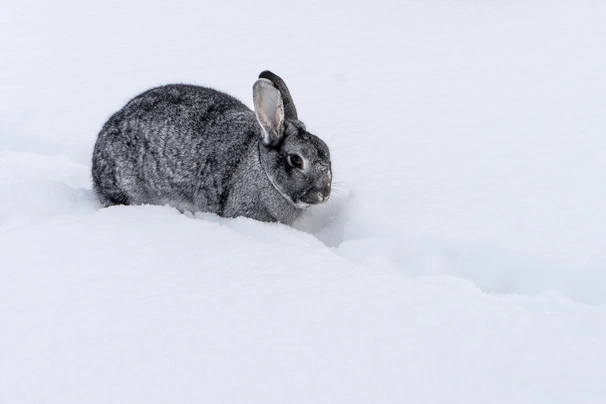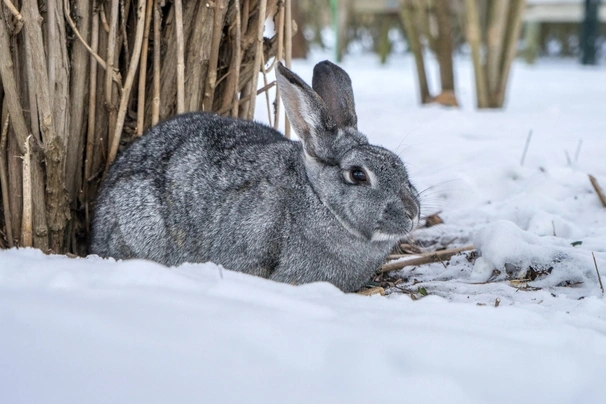Pets
Pets for studWanted petsBreedersAccessories & services
Knowledge hub
Support
Support & safety portalChinchilla
Introduction of the Chinchilla
The chinchilla was originally bred in France as a fur and meat animal and currently there are three types within the breed; the standard, American or ‘Heavyweight’ and the Giant, which is the result of crossing a standard Chinchilla with a Flemish Giant. The Chinchilla rabbit is very popular in America and was originally introduced to the country in 1919.
History of the Chinchilla
Named after the fact their fur closely resembles that of the South American chinchilla, this rabbit was developed in France in the very early days of the 20th century using Beverens, Himalayans and Agoutis. The Chinchilla was first shown in its native France in 1913 and made its first appearance at a large international show in Paris in 1914 where the breed attracted lots of attention from enthusiasts.
The Chinchilla quickly became very popular due to the similarity of its coat to that of the Chinchilla rodent and because its coat matured much faster than any other breed of rabbit, which meant it was much sought-after and a commercial success.
The Chinchilla Rabbit found its way to Britain in 1915 and reached American shores four years later, where it was further developed to include the American and Giant types.
Appearance of the Chinchilla
- Main colourways: Grey agouti
- Average weight: 2.5-3kg
The Chinchilla is a medium sized rabbit with a medium build. It has a compact, rounded body with a wide head and short ears which are held erect. The crowning glory of any Chinchilla rabbit is however, its dense, silky fur. The hairs are ‘agouti’ – where individual hairs display bands of different colours along their length. The under colour, which is nearest the skin, is a deep slate blue, the middle colour is a pearl white and the tips are grey. The fur is also ‘ticked’, where black guard hairs are liberally scattered throughout the coat.
The underside, flanks, rims of the eyes and neck are ticked with pearl, while the ears have some black markings.
Temperament of the Chinchilla
It’s essential that any pet rabbit is housed in a calm environment. As a prey animal the rabbit can be skittish and nervous so the less noise and boisterousness the better. If he can enjoy a quiet home the Chinchilla is a sweet-natured, curious little animal that loves human company. Rabbits can get used to noise though, and these types usually do well at shows.
They appreciate company so it’s always worth considering getting two rabbits together – two neutered males or a neutered male and a female will get along well. It’s not advisable to house a rabbit with a guinea pig as the larger rabbit could accidentally harm the smaller animal. They can get along with quiet cats, but should never be left alone with a predatory animal.
Chinchilla rabbits can be trained to respond to simple commands. They can learn their name quite quickly and will eventually come when called. With consistent training they may also learn the ‘come’ and ‘stay’ commands.
The Chinchilla is a very playful rabbit and will thoroughly enjoy playing with cat toys – particularly noisy ones! He will also appreciate the opportunity to try out his teeth on some gnaw toys. They can even learn to enjoy jumping over small obstacles.
Health of the Chinchilla
The Chinchilla Rabbit is generally a hardy animal, with few health problems associated with the breed itself. There are a number of issues however that are particular to rabbits that any owner must look out for.
Rabbits’ teeth grow continuously and must be kept worn down with a diet that’s high in roughage – good hay and green, fibrous vegetables will help keep his teeth in check. Gnaw toys can also help. If the teeth are allowed to overgrow they can cause the animal to experience difficulty eating and also injuries in the mouth that may become infected. Veterinary treatment must be sought for any rabbit with overgrown teeth and as the symptoms of dental problems can look like many other conditions – runny eyes or nose, lethargy, loss of appetite – a visual check of his teeth must be carried out at least once a week.
Flystrike is another potentially serious condition which can affect any rabbit that’s allowed to get a dirty coat. It’s essential that your pet’s living area is cleaned out thoroughly once a week and droppings are removed daily. You should also make sure he’s grooming himself properly as flies can be attracted to soiled fur, where they can lay their eggs. The resulting larvae will burrow under the skin of the rabbit, causing open wounds that could become infected. Flystrike can be difficult to spot in the early stages so he must be checked regularly for soiling and cleaned if he is dirty. He should be protected from flies in warmer weather and he should not be allowed to become overweight as this can affect his ability to groom himself.
All rabbits should be treated regularly for worms, fleas and ticks and they should also be vaccinated against myxomatsis and Viral Haemorrhagic Disease – both of which are highly infectious and can be fatal. It’s also worth considering having a female rabbit spayed as they are prone to uterine cancer.
Caring for the Chinchilla
If you want your rabbit to live indoors he should be taught to use a litter tray and all cables, wires, shoes, clothes, documents and anything else you don’t want chewing, must be kept out of the way.
If he is going to live indoors he should be supervised when around other pets and small children and he should be given a space of his own to retire to when he needs to rest. A dog crate or plastic indoor hutch will be ideal.
If your pet is going to live outdoors he should have a completely weatherproof hutch, with a felt roof and waterproof cover. The hutch should be placed in a sheltered area, away from direct sun and wind – a well-lit, well-ventilated shed is a great place to keep his hutch if you have one available. The hutch should be large enough for him to hop around and stand on his hind legs. It should be lined with hardwood shavings and straw and must be cleaned out thoroughly once a week. He should have a completely covered area where he can build his nest and sleep.
Your rabbit should be fed high-quality pellets, good hay and plenty of high-fibre green vegetables such as kale, cabbage, dandelions and clover.


